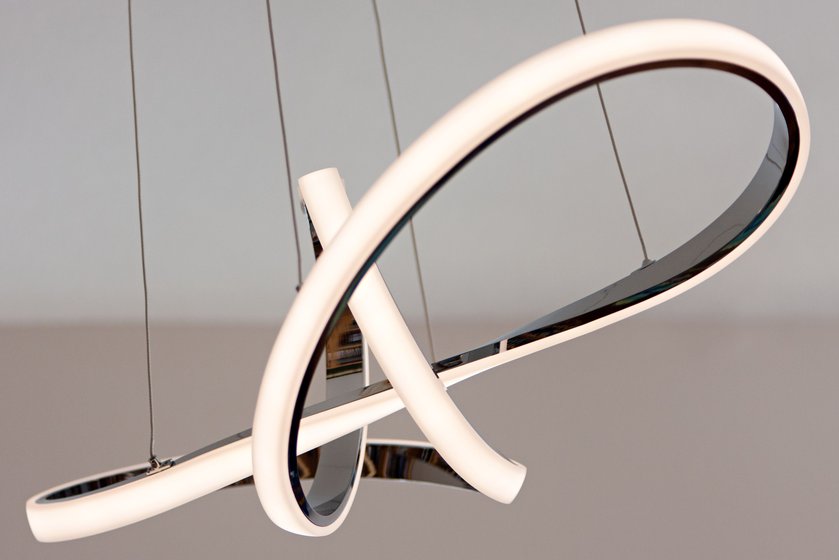Linkage
-
Spanning Trees with Low (Shallow) Stabbing Number (\(\mathbb{M}\)) is the master’s thesis of Johannes Obenaus at the Free University of Berlin and ETH Zürich. The stabbing number of a tree is how many edges a line can cross. Any \(n\) points in \(\mathbb{R}^d\) have a tree with stabbing number \(O(n^{1-1/d})\), useful in some data structures. The thesis includes a solution to Open Problem 17.5 of my book Forbidden Configurations in Discrete Geometry: removing points from a point set might cause the minimum stabbing number of a spanning tree to increase.
-
A pretty result in inversive geometry from the Japanese “Wasan” period, relating the diameters of circles in Steiner chains between two parallel lines to regular polygons.
-
Counting Memories by Chiharu Shiota (\(\mathbb{M}\)), an installation art piece in Katowice, Poland that prompts visitors to reflect on how numbers “connect us universally, comfort us, and help us understand ourselves” by writing down their feelings and memories about numbers that are meaningful to them.
-
Revisiting Minesweeper (\(\mathbb{M}\)). As Uncle Colin shows, calculating the probabilities of different scenarios for the boundary of the cleared region needs to consider as well the number of mines in non-boundary cells. Based on that, one can find the safest move, at least when there are few enough scenarios to list them all. But it looks much harder to find the move most likely to lead to clearing the whole board, even for simple initial situations like the one he shows.
-
Blind folks and the evolving elephant (\(\mathbb{M}\)). Guest post by my colleague Vijay Vazirani on the “Turing’s Invisible Hand” blog, on the different perspectives brought by economics and computer science to problems of matching resource providers with resource consumers.
-
My new dining room ceiling lamp is a trefoil knot (\(\mathbb{M}\), gallery)! It’s the “Vornado” LED lamp from WAC lighting. We chose it to replace a halogen lamp that shorted out, burned through its power cable, fell onto the table below it, and shattered hot glass all over the room, fortunately without causing a fire or seriously damaging the table and while the room was unoccupied.
-
Two speakers censored at AISA, an Australian information security conference (\(\mathbb{M}\)). One of them is Australian, the other not. They were both scheduled to talk long before and cancelled after a last minute demand from the Australian Cyber Security Centre. As Bruce Schneier writes, this kind of action merely calls attention to their work and makes the Australian government look stupid and repressive while doing nothing to actually increase security.
-
A history of mathematical crankery (\(\mathbb{M}\), via), excerpted from David S. Richeson’s book Tales of Impossibility: The 2000-Year Quest to Solve the Mathematical Problems of Antiquity
-
Incenters of chocolate-iced cakes and more fair cake-cutting (\(\mathbb{M}\)). If you want to divide both cake and frosting (area and perimeter) into equal pieces, it helps to start with a shape that has an inscribed circle.
Relatedly, Erel Segal has written up for Wikipedia a collection of open problems in fair division.
-
The Trump administration wants to roll back fair housing laws by allowing racist algorithms to discriminate on behalf of racist landlords (\(\mathbb{M}\)). The deadline for telling them this is a stupid idea is this Friday, October 18.
-
Japanese KitKats are replacing plastic packaging with origami paper (\(\mathbb{M}\), via), in a bid to be both more fun and more environmentally conscious.
-
Living Proof (\(\mathbb{M}\)), a free e-book collecting stories of mathematicians about the roadblocks on their paths to where they are now.
-
Kotzig’s theorem (\(\mathbb{M}\)). Every convex polyhedron has an edge whose endpoints have total degree at most 13. You might think that (because the average vertex degree in a convex polyhedron is < 6) there will always be an edge whose endpoints have total degree at most 11, but it’s not true. As Anton Kotzig proved in 1955, the answer is 13. A worst-case example is the triakis icosahedron, whose minimum-degree edges connect vertices of degrees 3 and 10.
